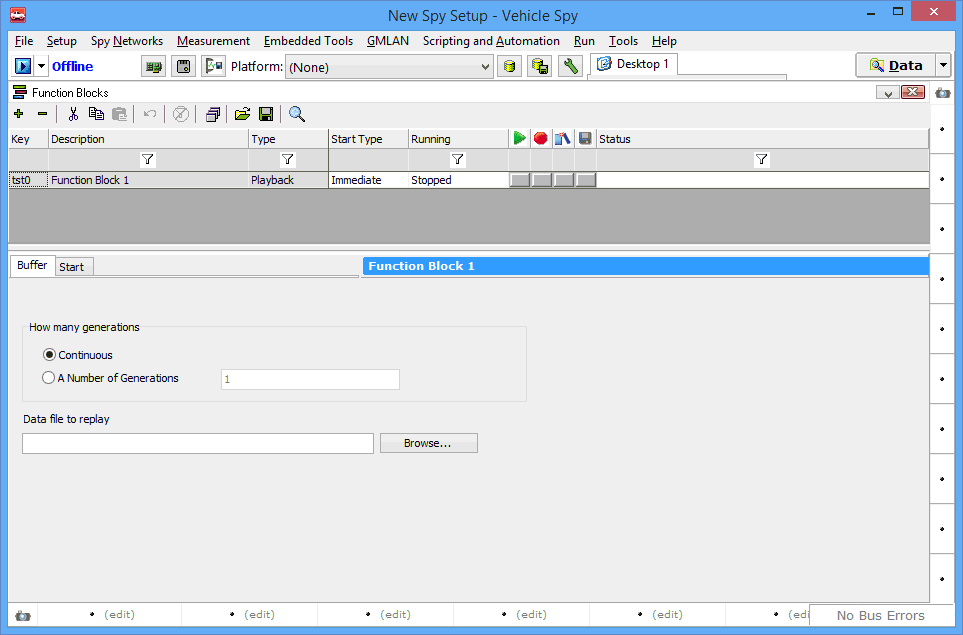Playback type function blocks (sometimes called playback blocks) allow you to transmit the messages in a Vehicle Spy buffer file. The messages in the file are actually "played back" on the network in real time based on their timestamps. Typically you will play back a buffer that has been previously captured on a network, possibly using a capture block. You can modify the buffer data if necessary, to test specific problems or scenarios.
Create a new playback block by clicking the  button on the far left of the
function block toolbar, and then choosing Playback from the popup menu. Vehicle Spy will create a default playback block for you as shown in
Figure 1, with the Buffer Tab selected.
button on the far left of the
function block toolbar, and then choosing Playback from the popup menu. Vehicle Spy will create a default playback block for you as shown in
Figure 1, with the Buffer Tab selected.

Like any function block, a new playback block appears in the function block list near the top of the function blocks area. You can rename the function block by double-clicking on the default (Function Block 1) and entering a more descriptive name.
The name entered in the function block list also appears in blue in the function block setup area for greater clarity.
Playback blocks are much simpler than script type or capture type function blocks, and contain only two tabs. One of these is the Start Tab common to all function block types, where you specify the block'sStart Type and related options. The other is the Buffer Tab, which you can see in Figure 1. This tab is itself quite straightforward, containing only a couple of parameters.
This option controls how many times the buffer is played back:
Click the Browse... button to launch the standard Windows file picker dialog box, then navigate to the file you want to play back and select it.
Playback blocks are generally used for diagnostic purposes. Usually live data is saved from a network and then played back, possibly after being altered.
A common use of a playback block is to first collect network traffic and then play it back to test a particular network, ECU or set of ECUs. Here is a sample scenario:
Buffers are stored in the standard .csv text format and can be edited in a text editor or using a spreadsheet program such as Microsoft Excel. Be sure when modifying the data not to alter the basic structure of the file or remove any of header lines, such as those containing network, protocol and baud rate information. After making your changes, save the file and then use it in the playback block.
One example of customization would be changing the data file to alter message timing. This could be useful if you wanted to isolate a particular message that was causing issues.